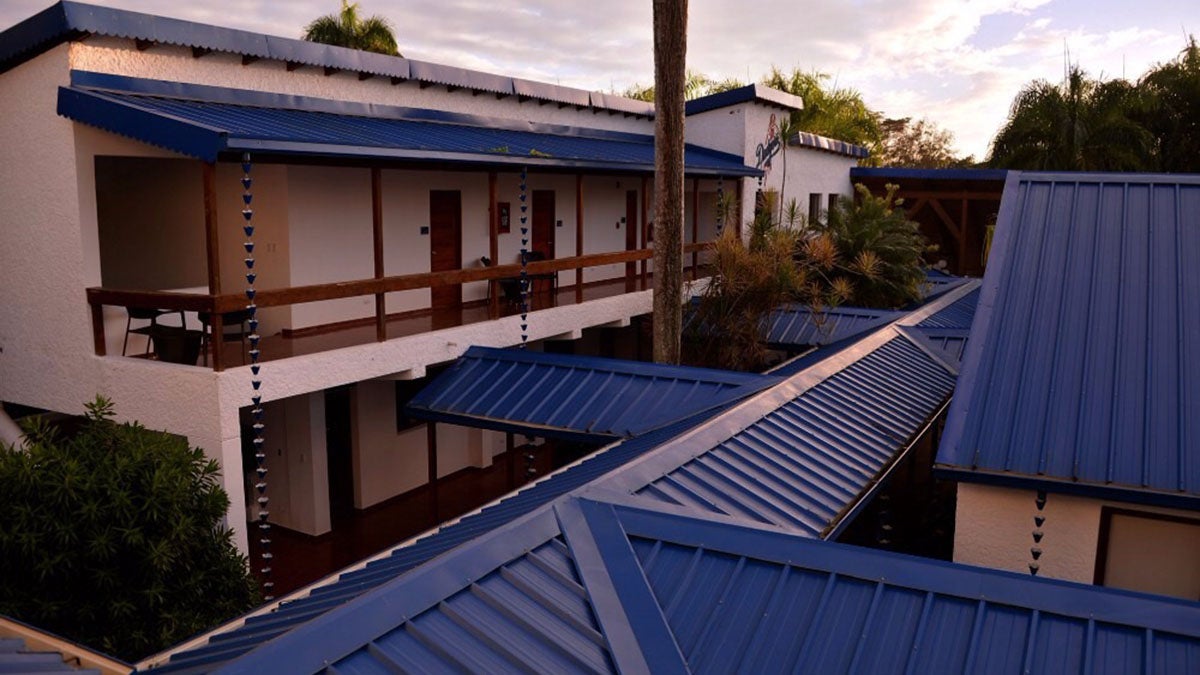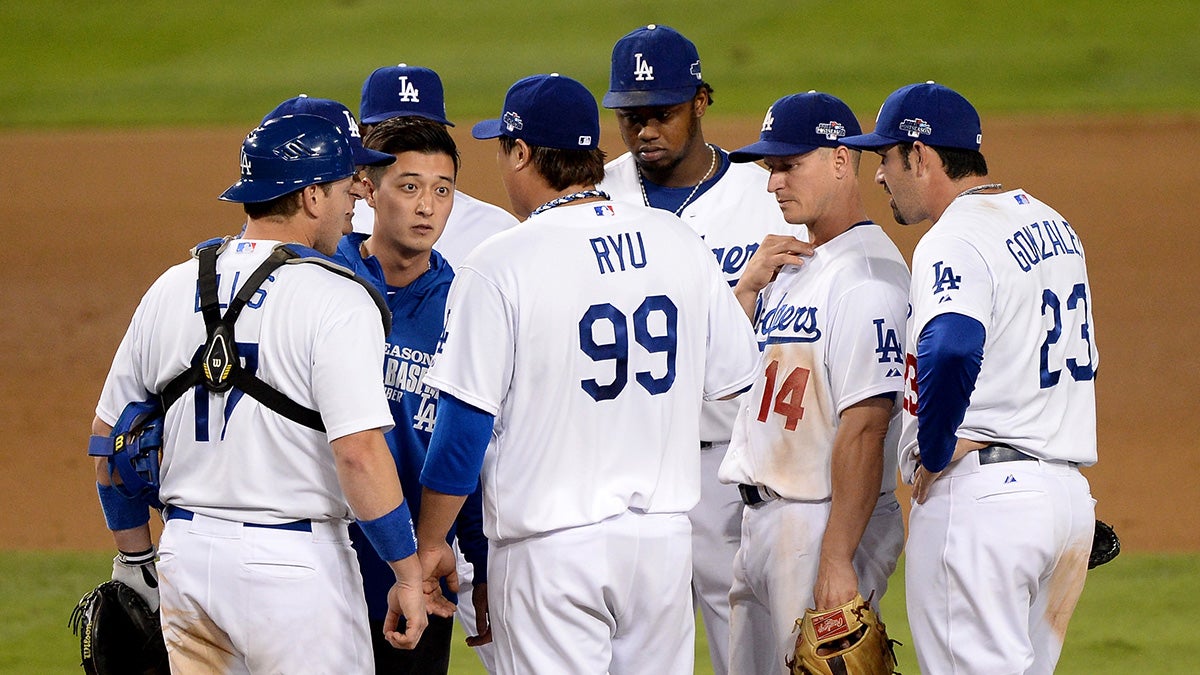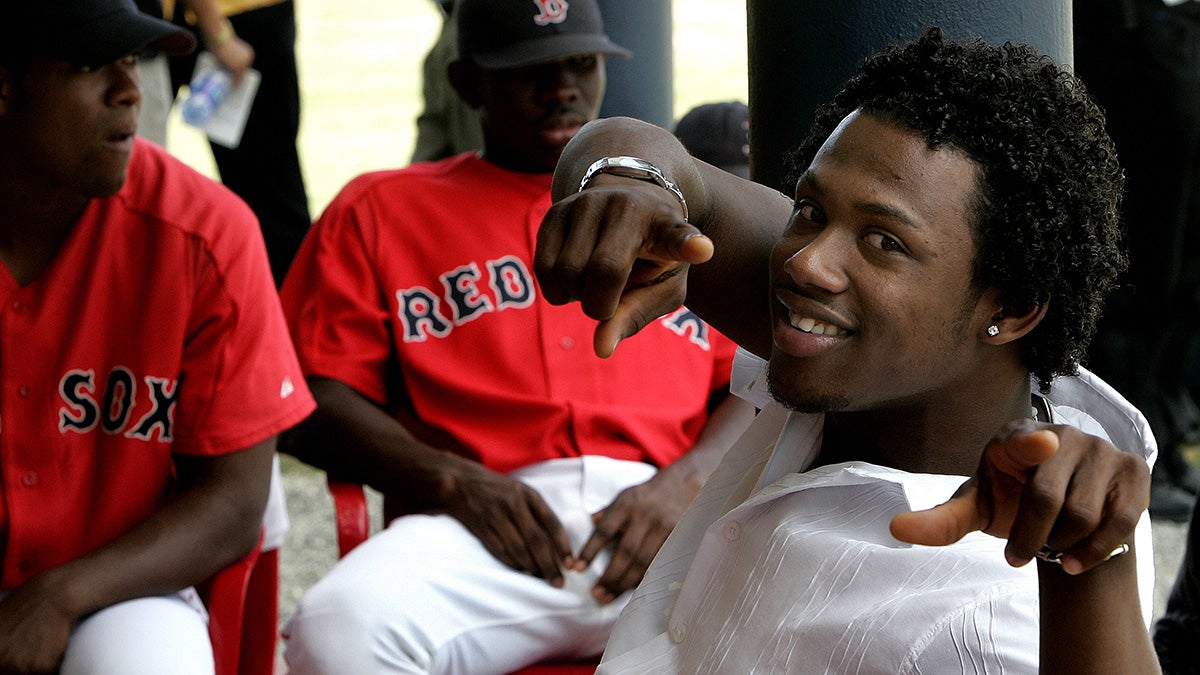Building a baseball team: Assimilating Latin, Asian players a team effort

A major league clubhouse can be a modern day Tower of Babel - multiple languages spoken and with them multiple inside jokes, strategy discussions as well as important discussions on where and when to get a haircut.
With nearly a third of active players born in Latin American countries and about two percent from Asian countries, the American Pastime is a global game. Assimilating those players into the North American way of life can be a lot of work.

Major League Baseball is experiencing considerable growth among foreign-born players. The percentage of active players born in Latin American countries is approaching one-third, and the percentage of players from Asian countries hovers around 2 percent.
With respect to Latin American players, MLB organizations typically sign them as teenagers in the hope they can work their way up the minor league development ladder and ultimately enjoy a career in the big leagues. In the case of Asian players, most come to North America with at least some professional experience in their respective country’s major league. In either case, the assimilation process has become a major component of a team’s organizational structure.
“It has to be because you are talking about close to 30 percent of the talent at the big-league level comes from Latin America and about the same percentage at the full-season (minor league) clubs,” said Milton Jamail, coordinator, Latin American Cultural & Education Programs for the Tampa Bay Rays. “If you are not doing it, then you are not looking after your investments.”
Every major league team has some kind of assimilation program. With the Dominican Republic long having been fertile ground for baseball talent, every organization has an academy in that country. The same used to be the case in Venezuela before political strife resulted in teams pulling out. Today, young Venezuelan players travel to the Dominican, which essentially serves as the base for all of Latin America.
Learning the North American way
Like U.S.-born players, Latin American players aspire to become major leaguers. As such they are taught English and are educated on North American culture. Concentrated efforts by MLB organizations in these areas, which include dedicated staff, have been recent developments.
“I would say that the cultural assimilation and English language acquisition part of the industry has really gained momentum in the last 10 years,” said Jeff Diskin, coordinator for cultural development with the Kansas City Royals.
Going back 20, 30 years or more, players relied mostly on those they played with to adjust to life in North America.
[beauty_quote quote='“It starts by having the right atmosphere at the academy." - Duncan Webb, coordinator of international player development, Los Angeles Dodgers']
“Coaches and veteran players definitely played a big part in helping younger players acclimate,” said Roman Barinas, who has spent 10 years with the Los Angeles Dodgers in various international roles, including player development. “The difference now is that many organizations have specific positions either on their development staff or in their front office dedicated to the acclimation programs.”
Because of such ramped-up efforts, the expectation is that by the time players are assigned to a minor-league affiliate there are as few surprises as possible.

“It starts by having the right atmosphere at the academy,” said Duncan Webb, coordinator of international player development for the Los Angeles Dodgers. “By that, I mean, to the extent that it is possible we want our academy to be an extension of our operation in the United States. From a food and nutrition standpoint and from what we do on the field in terms of the fundamentals, we try to be as consistent as possible so that the transition, when hopefully they do end up making it, is as smooth as possible.”
The process can begin before a player is signed. For example, after a scout spots a player he believes his team should sign, he contacts a member of the team’s international operation. Jamail noted instances where he and another member of the Rays’ staff in the Dominican would visit with that player’s parents to get an idea of what the kid is like and the type family he comes from. If the player is signed, the process begins in earnest.
“Once he is signed, then he comes into our academy,” Jamail said. “We do an English evaluation on him, and, in addition to teaching English every day, we are talking about discipline, focus, organization, being on time and all the things that every teenager anywhere in the world needs to do.”
Since these are teenagers, there is an effort to prevent the assimilation process from becoming overbearing.
“You can’t put too much on these young men,” Jamail said. “They are teenagers who will want to play video games and other stuff just like anybody their age. We are signing young men at 16 or 17, who in the U.S. would be sophomores or juniors in high school.”
These young players also need to learn baseball. They may be talented, but they are also very raw because the level of instruction throughout Latin American countries is not close to the standard in North America, particularly the U.S.
“As much as it is assimilation with American culture and becoming comfortable within a new environment, what we’re ultimately focused on is everything that has to do with baseball as well as culture,” Barinas said. “How baseball is played in the big leagues may not be how it is played in other countries. We have to keep both things in mind as we address the needs of each individual player.”
More than baseball
There are times during the process that baseball is put on the back burner. For the past three years, the Dodgers have run a cultural acclimation camp at their training facility that takes place during the Arizona Instructional League, which runs from mid-September to mid-October. The camp is made up of 15 players sent from their Dominican academy for the purpose of orientation not baseball. Webb likened it to being new on a college campus with the need to meet people and get one’s bearings.
“The focus is on everything else that they are going to experience when they come to the States at some point to compete for a job,” said Webb, who spent about a decade working with the Boston Red Sox in international player development before joining the Dodgers organization. “When they do come (to the States), their focus should be on baseball rather than being concerned about where they are going to eat or how to get to the ballpark.”
While much energy and resources are placed on preparing players for the transition to playing in North America, the assimilation process continues as players advance to and through the lower levels of the minor leagues.

“When we visit the (minor league) affiliates, we check on how they are doing, check on what they need and however we can help them,” Diskin said. “Once that is taken care of, we focus on different points of emphasis. Two years ago, we focused on Royals history, Royals expectations and the Royals handbook and re-emphasizing the things they need to know in order to be a professional. In January, we hired a leadership director, so this year leadership development has been a focus when making the rounds.”
Teams handle the process differently as players get older and rise through Double A, Triple A and move closer to the majors.
[beauty_quote quote='“You are not only the voice of the player, but you are the ears of a player. You are constantly picking things up around you and sharing with him what a conversation was about and getting him to understand what the cultural tone is like. You are teaching him the American way, in a lot of ways.” - Martin Kim, Major League Baseball international business director']
“Some clubs have specific help for the Latin players all the way through,” Diskin said. “Every organization is different. For us, the support is there for everybody at that point, not just the (foreign) players.”
The assimilation process is a two-way street from the standpoint it is important to expose American-born players to the lifestyle of potential future Latino teammates. The Royals, for example, brought a dozen such players from their low minor-league affiliates to their Dominican academy for about 10 days in January. They spent mornings working out with coaches there and seeing how the academy operates. Afternoons were reserved for community service projects with the U.S. players working side by side with Latino players.
“That helps our American players get a better understanding of where the Latin players come from,” Diskin said. “Then, in turn, they can provide a better support system for the Latin players to adjust to life in America.”
Adjusting to life in America is what Asian players, who are typically in their early to mid 20s and have played professionally in their native countries, have to do as well. The assimilation process often includes a translator, who typically serves several roles in addition to helping a player overcome language barriers.
Translators
Martin Kim, who serves as Major League Baseball’s international business director, was employed by the Dodgers when the team signed South Korean pitcher Hyun-Jin Ryu in December 2012. Ryu was 25 at the time.
“On the first road trip, I taught him how to tip in America and things of that nature,” he recalled. “You are also sometimes in the role of personal assistant. If he wants to, for example, buy something for his parents, you have to go with him because there is no way he can do it by himself. It really is a 24-hour job because you never know when you are going to be needed. I used to describe it is as being somebody’s personal doctor and you don’t know when they are going to be sick.”

A translator serves as a critical middleman when it comes to the media and helping relay messaging whether it is to or from a member of the front office, coaching staff or another player. In that sense, helping players adjust to the clubhouse environment is vital. It is an adjustment for Asians that can differ from that of Latinos, whose sheer numbers throughout an organization allow for some level of comfort in the clubhouse.
“You are not only the voice of the player, but you are the ears of a player,” Kim said. “You are constantly picking things up around you and sharing with him what a conversation was about and getting him to understand what the cultural tone is like. You are teaching him the American way, in a lot of ways.”
Because of the many vital roles a translator is responsible for, that person often moves with a player that has been traded instead of having the player start with a new translator in his new city. A player’s former team and new team work out the details of the translator’s move as well.
“Players become very attached to translators, and (teams) include them in a trade or (free agent) signing,” said Kim.
Having a familiar face in an otherwise new clubhouse makes for an easier move. The clubhouse, though, with its mix of nationalities can be a good place to assimilate.
“Even with the language (barrier) there is quite a bit of interaction,” Barinas said. “Even without speaking the language, there are inside jokes, poking fun at each other and the things that guys do. I could imagine it being a lonely place, but players are aware the game is international be it if they are Dominican, Venezuelan, Cuban or Korean. With all the different backgrounds in the clubhouse having a balance helps ease the tension a little bit because everybody is kind of forced to comingle and try to understand each other any way they can.”
Whether it is Latino teens or Asians with professional experience, the assimilation process has become a critical component within a Major League Baseball organization.
Tom Layberger has spent more than 25 years as a writer, editor and web producer for various outlets, including the Versus network for whom he managed NHL and college football content
Related Articles
Astros speaking the language of victory: How Spanish unites them
Fielding diverse lineups, ownership pays off in Premier League, Major League Baseball
MLB players aided through visa process, but families face roadblocks

